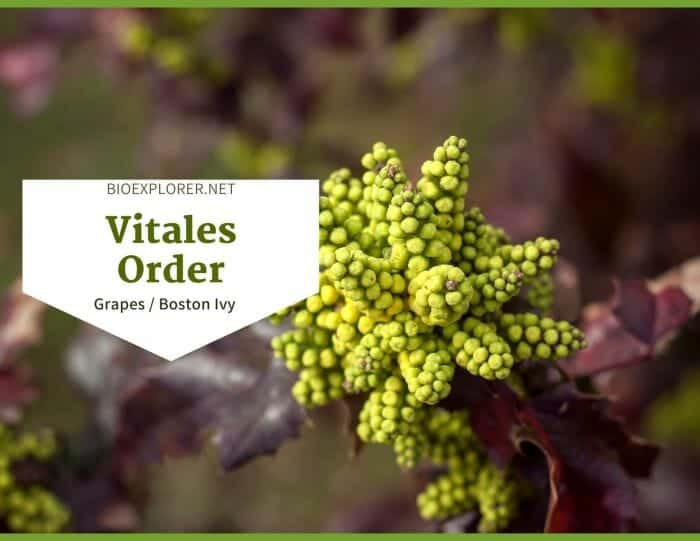
The grape order of flowering plants, Vitales, are lianas, vines, and rarely shrubs or hemicryptophytes distributed in tropical, subtropical, and warm temperate regions.
Members of Vitales have small flowers and simple, pinnate, or palmate leaves. The tendrils and the inflorescences are opposite to the leaves. The grapes, Boston Ivy, and Chinese Virginia creeper are the example species of the order Vitales.
APG IV (2016) classifies Vitales within the Rosids. Order Vitales contains only 1 family, 17 genera, and approximately 995 species. The sole family of the Vitales order is Vitaceae.
Table of Contents
Vitales Distribution
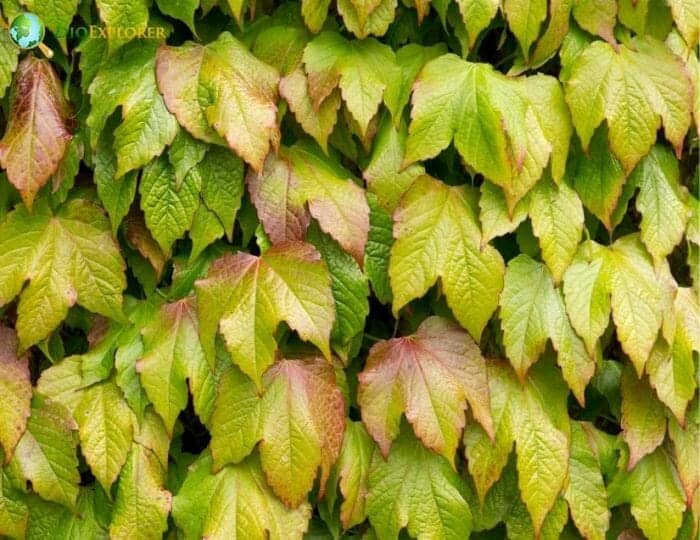
Most of the members of the Order Vitales are distributed in warm temperate regions or tropics of the world. They are found from eastern North to South America. Other species are distributed from central to southern America. Others are thriving in Southeast Asia/Australasia.
![]()
Vitales Characteristics
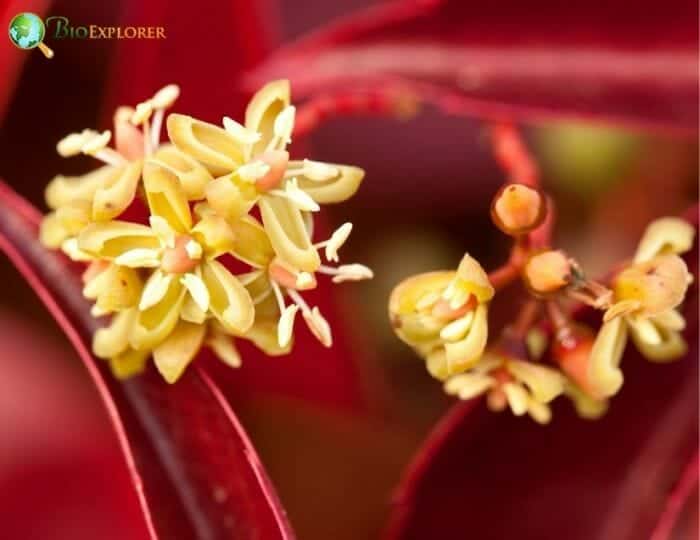
- Plant type: Members of Vitaceae are lianas, herbs, or trees. Some species are succulents or pachycaulous.
- Stems: Typically, the stems of the Vitaceae species possess tendrils opposite the leaves. The stems are woody. Less often, they are herbaceous.
- Leaves: Vitaceae plants have simple and alternate leaves. Often, their leaves are palmately lobed and veined. The margins are serrate. The stipules of the Vitaceae species are always present. Usually, their stipules are small and early deciduous.
- Flowers and inflorescences: Vitales flowers are small, actinomorphicWhat is actinomorphic?A characteristic of the flower exhibiting radial symmetry such as starfish or Daisy flower; capable of being bisected into identical halves along more than one axis, forming mirror images. Opposite is Zygomorphic., unisexual, or bisexual. The inflorescences are umbelliform cymes, racemose thyrsesWhat is thyrses?A panicle-like inflorescence which has one main indeterminate axis and many lateral axes which are determinate (example: Lilac), corymb, or panicle. They are on terminal shoots opposite to the leaves. In rare instances, they are axillary.
- Sepals and petals: The perianth of the Vitaceae members are biseriate. The calyxWhat is calyx?A collective term for all the sepals of a flower; the lowermost whorl of floral orgrans (Plural form is calyces). has 4-5 (3-7) sepals[1]. The flowers have aposepalous calyx. In some species, the calyx is reduced to a collar. The petals are distinct and valvate; 4-5 (3-7). The corollaWhat is corolla?A collective term referring to the petals of a flower. is generally apopetalous.
- Stamens and carpels: The stamens are antipetalous; 4-5 (3-7). The gynoeciumWhat is gynoecium?It is a collective term for all carpels (female parts) in a flower. Carpels can be either apocarpous (separate) or syncarpous (combined or united) of the flowers is syncarpousWhat is syncarpous?Flowering having united carpels; Contrast apocarpous.. Usually, they have 2 carpels. Other species have 3 or 4.
- Ovary and fruit: The ovary of the Vitaceae is superior, and the fruits are fleshy berries.
- Seeds: The seeds are endospermousWhat is endospermous?An embryonic nutritive tissue formed during double fertilization by the fusion of a sperm with the polar nuclei.. The shapes are heart, pear, subspherical, or prismatic.
![]()
Vitales Flowers and Reproduction
The flowers of Vitales are actinomorphic and small. They are in cymes, racemose, corymb, or panicle.
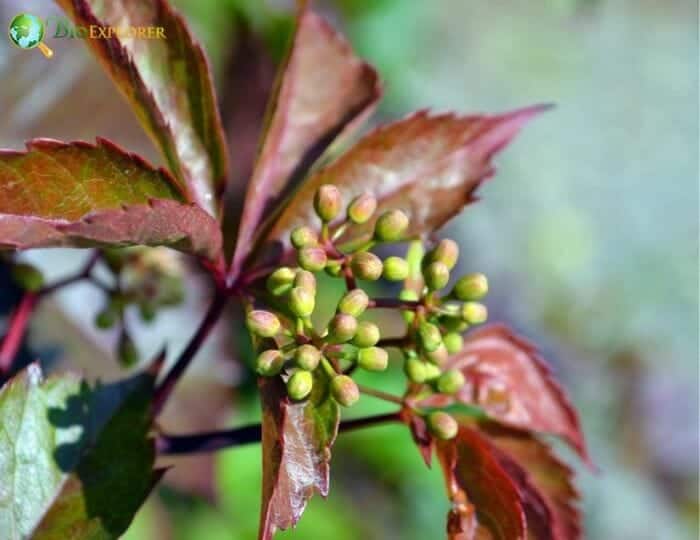
- Vitaceae flowers are in terminal shoots opposite to the leaves. Rarely they are axillary. The perianth of the Vitaceae is cream, green, and red. Usually, they are concolorous[2]. The calyx is small and aposepalous. The petals of the flowers are distinct. They are connate to the base or Calyptra-like and distally coherent.
- Vitaceae flowers have superior ovary, bicarpellate, and bilocular. There are species, however, with 3-4 carpels. The style is solitary and short, consisting of minute stigma found at the apex.
- The nectaries of the Vitaceae flowers are 5-lobed. They are situated alternating with the stamens or discoid around the base of the ovary.
- The flowers of the Vitaceae are bisexual or sometimes unisexual. Most munching grapes undergo self-pollination. There are, however, varieties that are not self-pollinating and need another pollinating grape to bear fruits. Though perfect flowers can self-pollinate, research shows that the presence of pollinators can increase production by 50%.
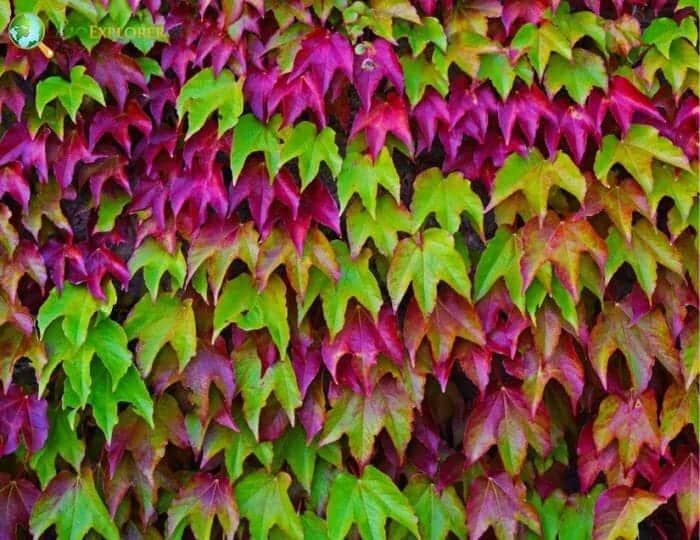
![]()
Example Vitales Species
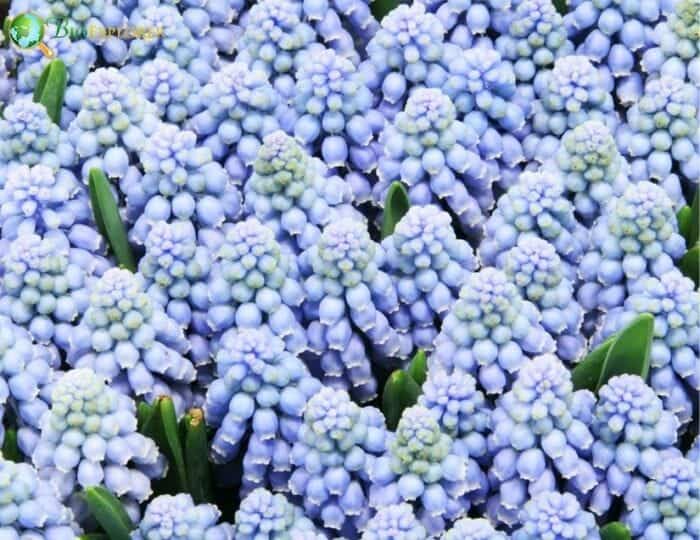
Many plants that belong to the Vitales order are beneficial. The following are the example species of the Vitales.
- Common Grape Vine: The fruit is edible. The fruit is used to produce wine, juice, fruits, and raisins. It also has nutritional and medicinal value.
- False-grape or Heart-leaved pepper vine: The fruits are not edible. However, it has ornamental value, and it is beneficial for fruit birds in the wild.
- Peppervine: The species is fast-growing and sometimes considered a pest by some. But the foliage is attractive. The species is used as ornamental because the fruits are attractive. It is beneficial in the wild for fruit birds and fruit mammals.
- Three-leaved wild vine: The Three-leaved wild vine has landscaping value because of its ornamental foliage and fruits. The young leaves are eaten as a vegetable. It is also used in traditional medicine.
- Kerenda: The leaves are cooked and eaten as vegetables. Also, the leaves, sap, and stem of the C. debilis are used for traditional medicine.
- Cayratia mollissima: The leaves and fruits of C. mollissimahas medicinal value.
- Grape ivy[3]: The Grape ivy is sometimes used as houseplants, in hanging baskets, or trellised.
- Chinese Virginia Creeper: The Chinese Virginia Creeper is commonly used as a garden plant.
- Boston Ivy: Boston Ivy is a garden plant commonly used as a climbing vine or groundcover.
- Teru[4]: The species is used in traditional medicine.
![]()











